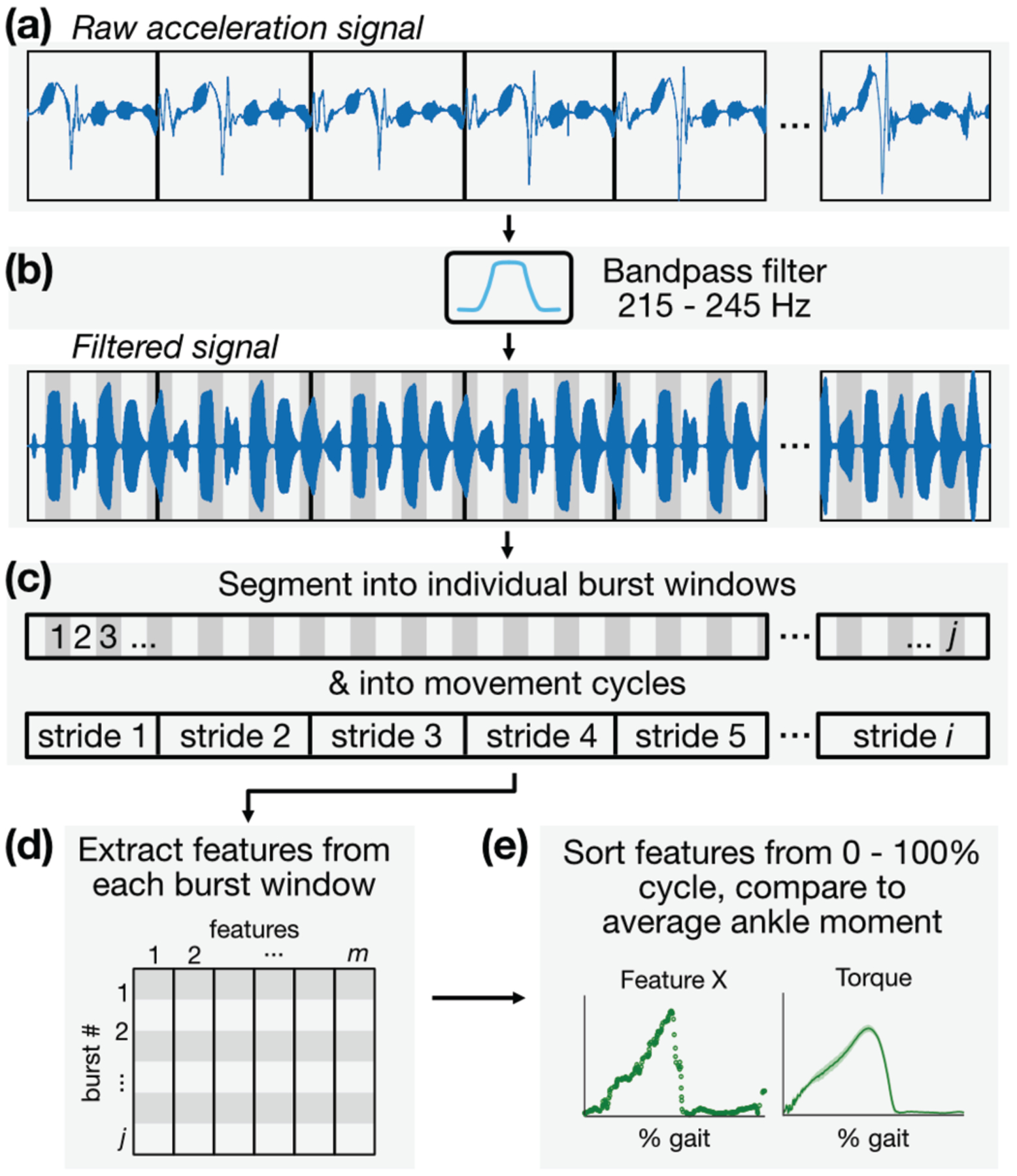Fig 4.

Signal processing and analytical framework, (a) The skin-mounted accelerometer captures not only local vibrations of the skin due to motor excitation but also coarse movement of the limb and other artifact, (b) The raw acceleration signal is bandpass filtered selectively around the motor excitation frequency of 230 Hz. (c) The signal is then segmented into individual burst windows and movement cycles, (d) Features are extracted from each burst window and stored in a feature matrix, (e) Features are plotted against their location in time within each movement cycle so that average behaviors across each cycle can be observed.
